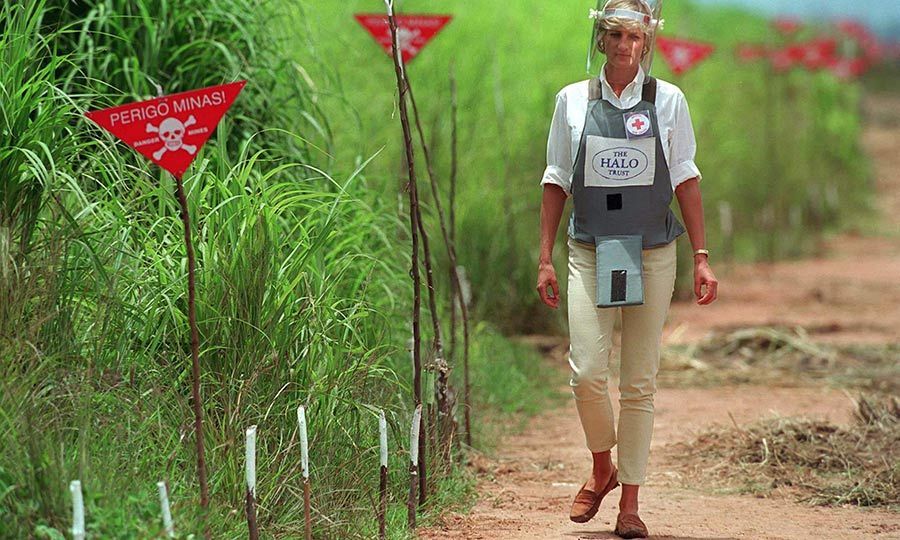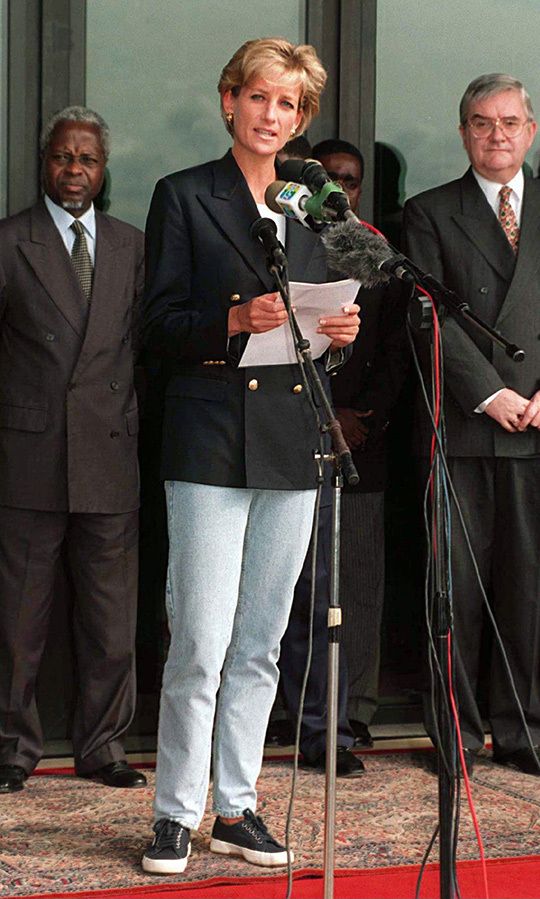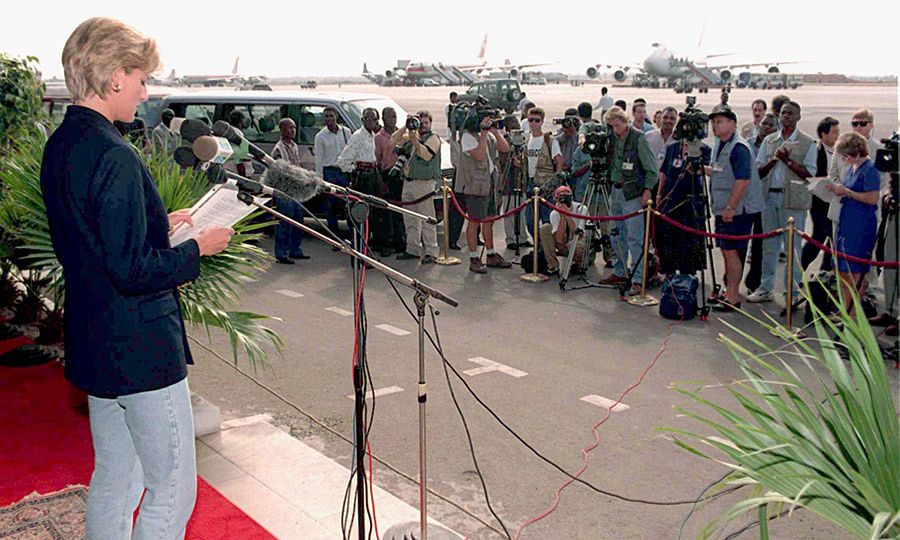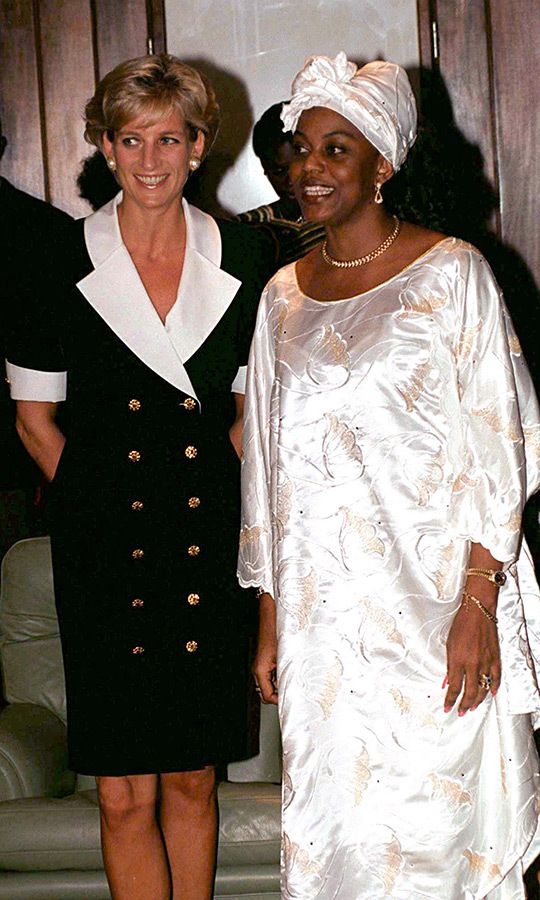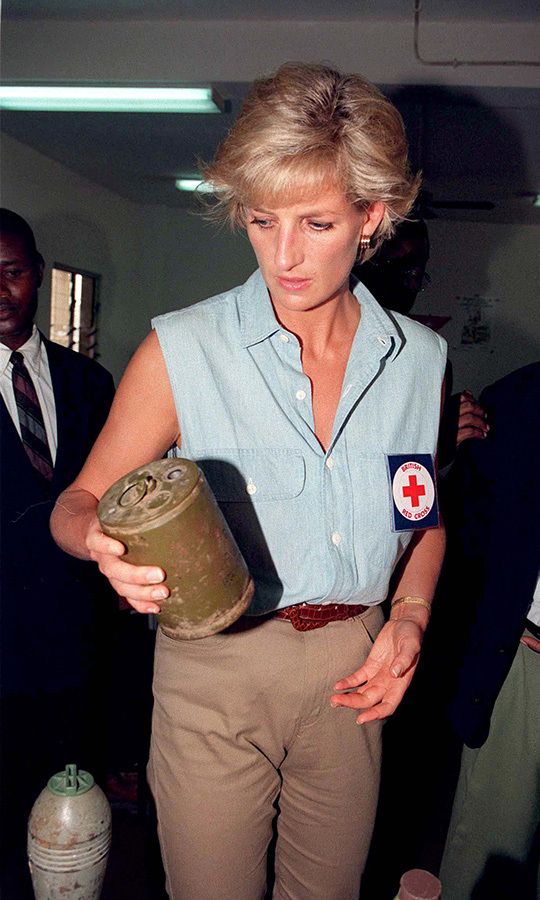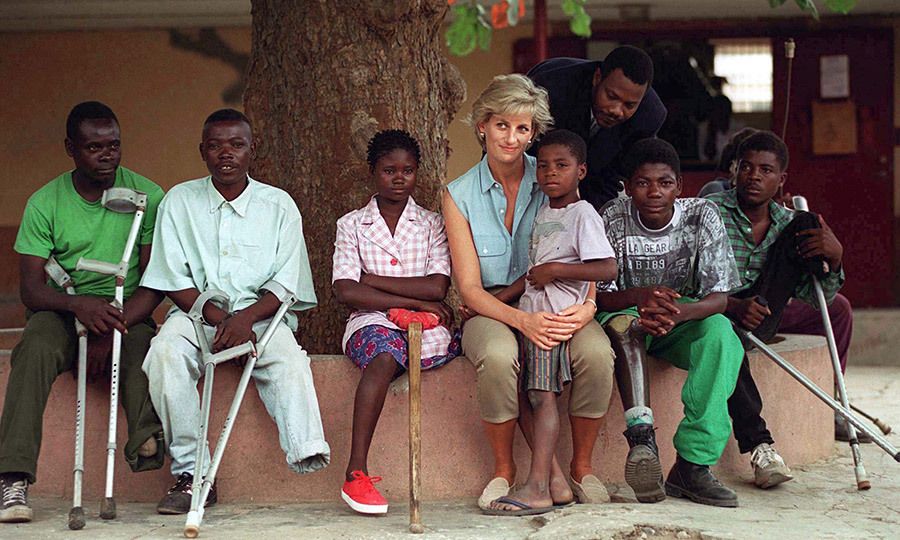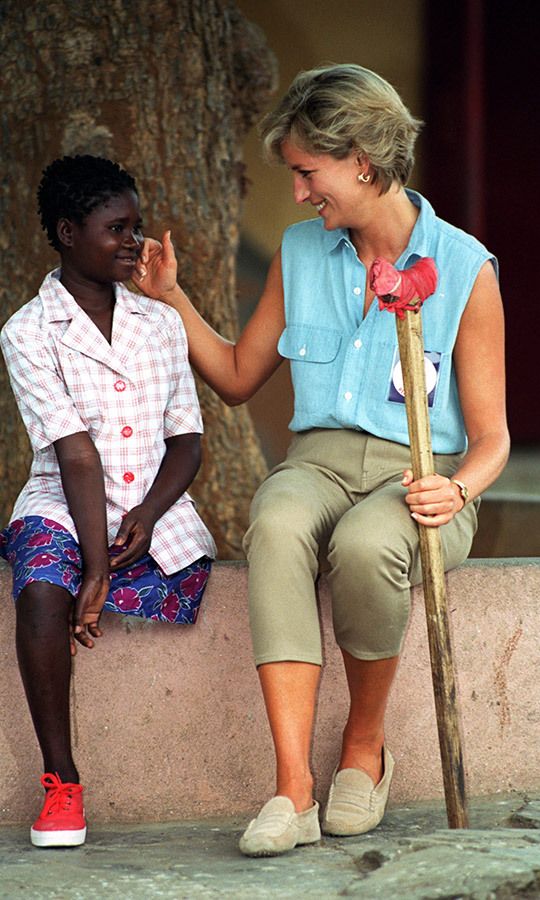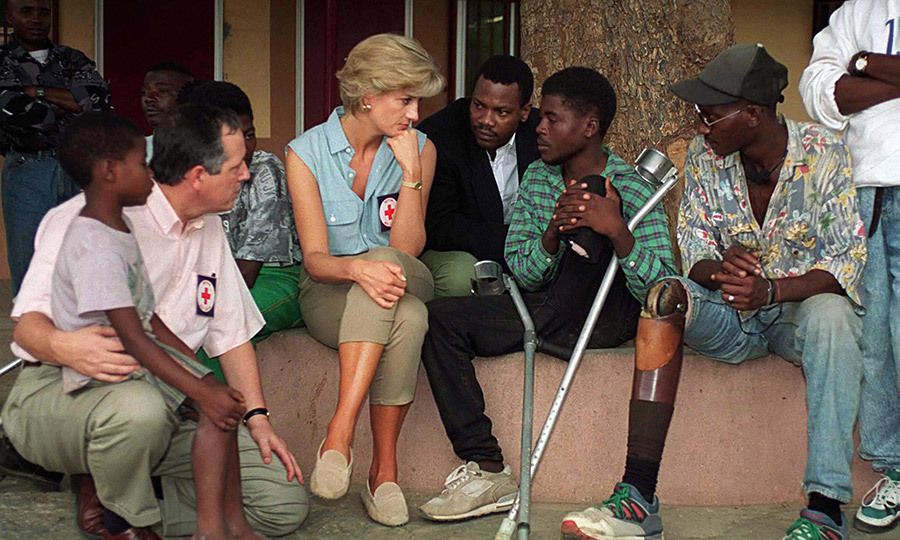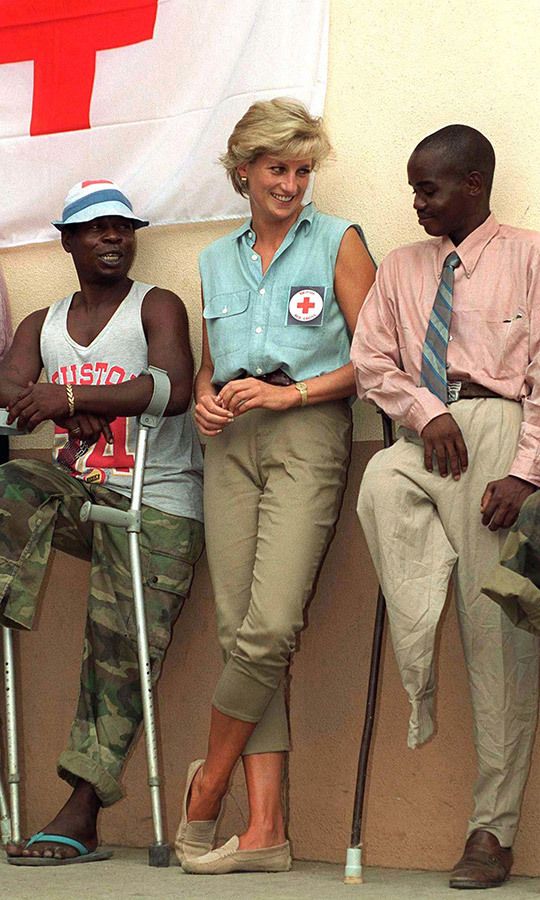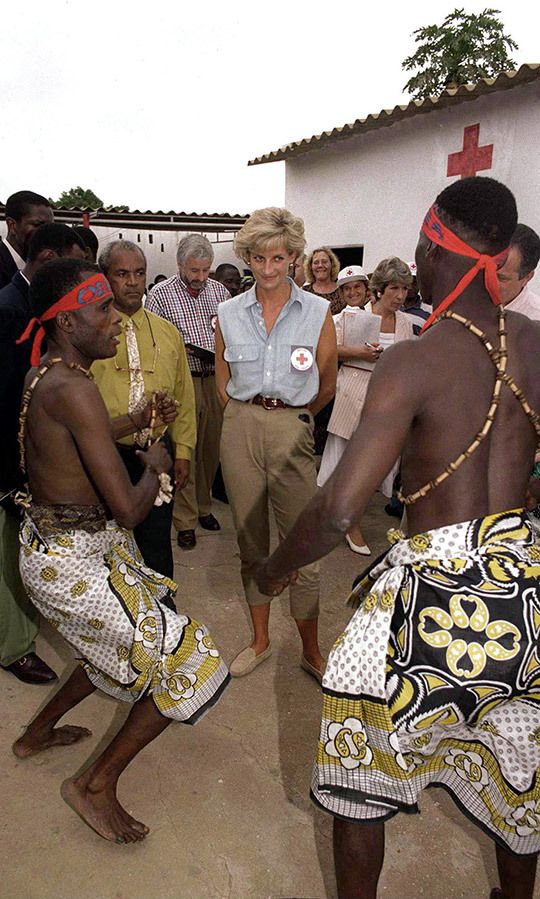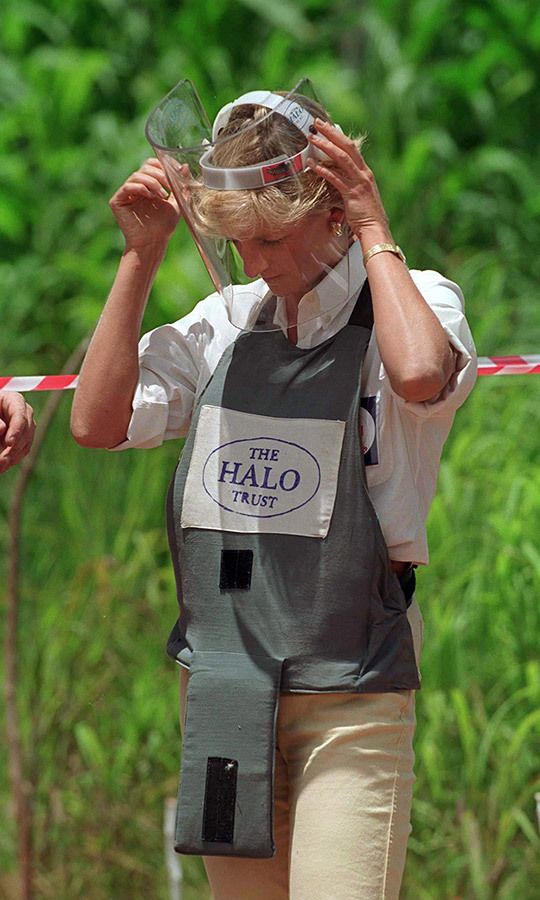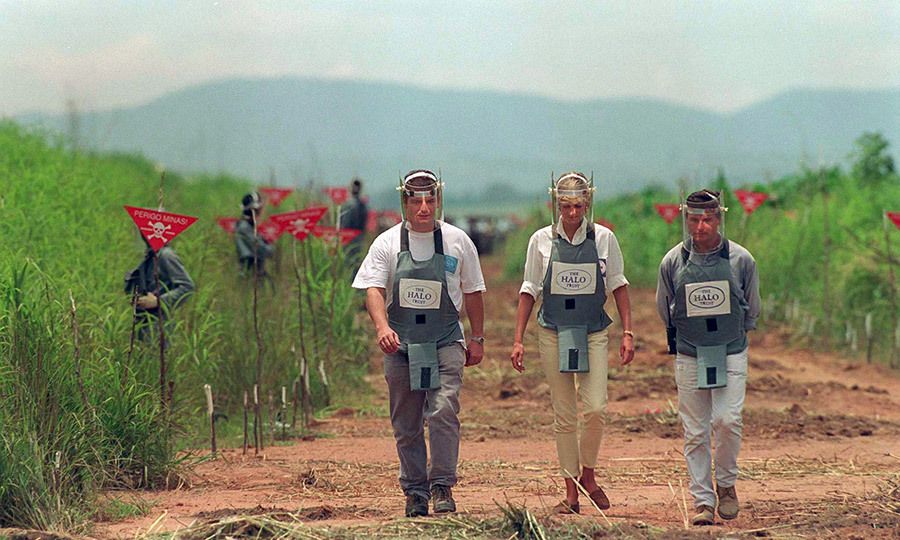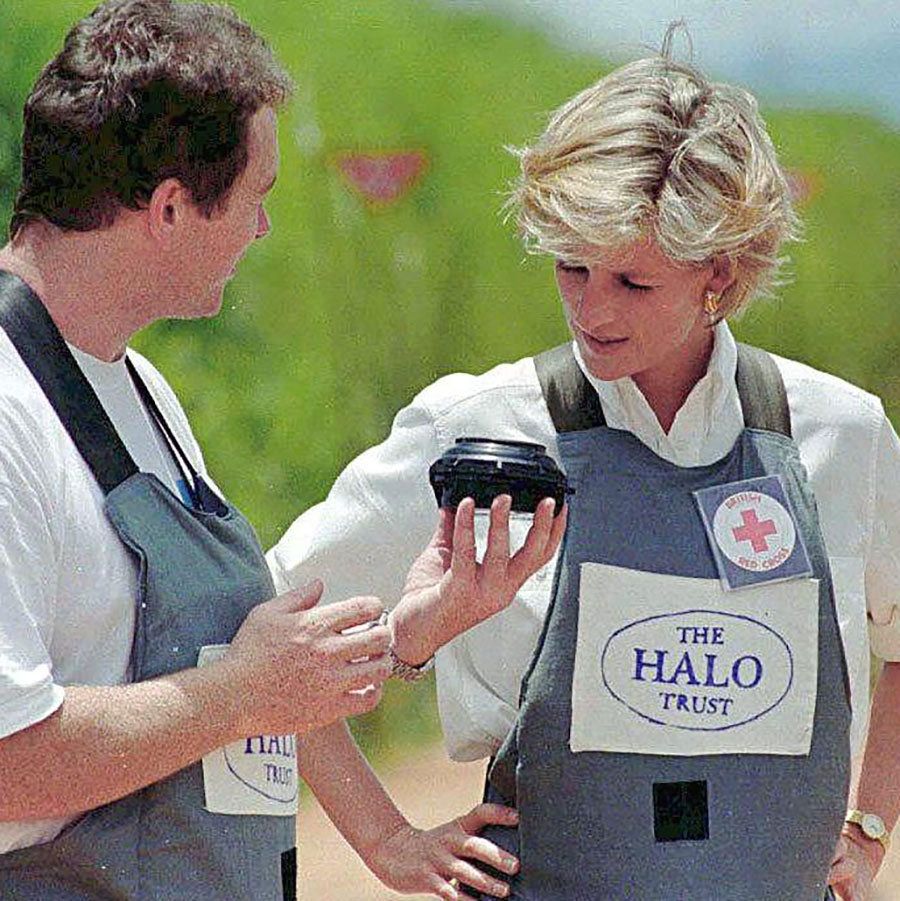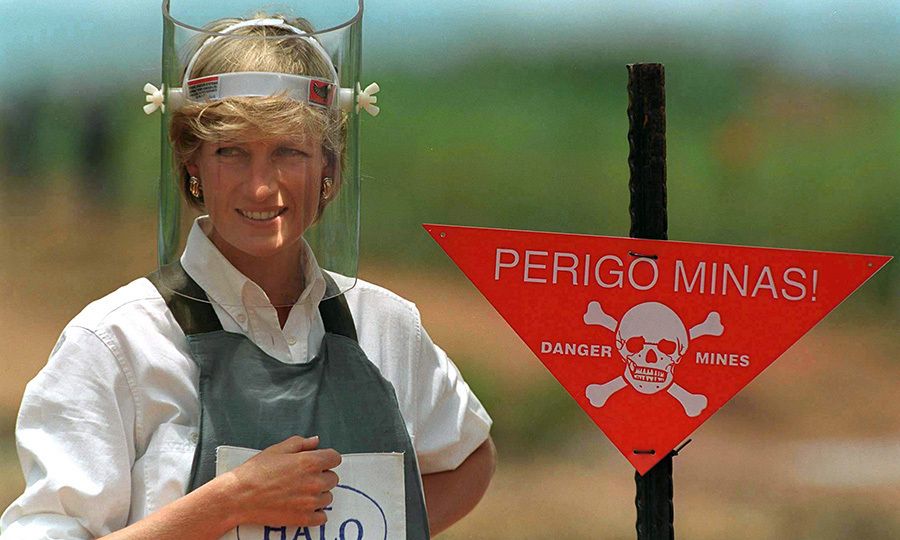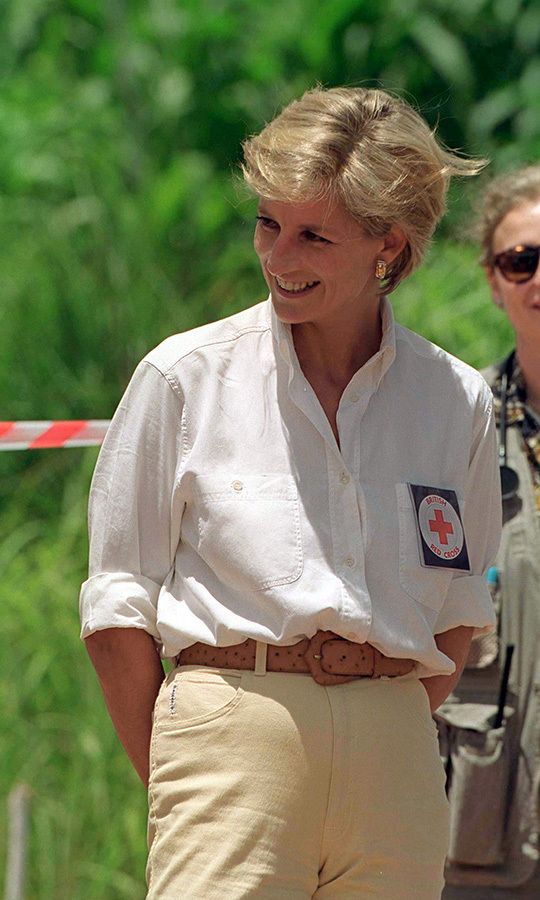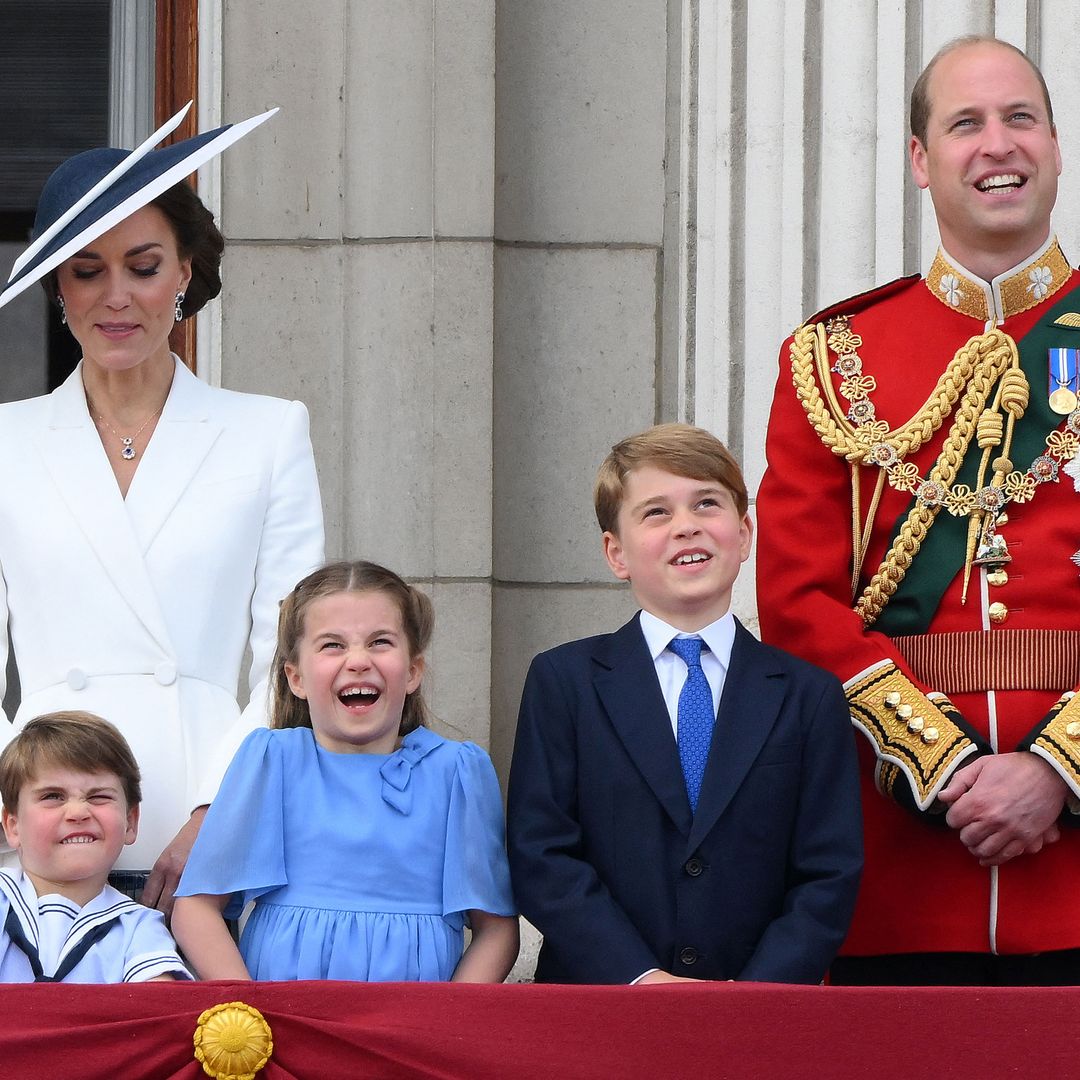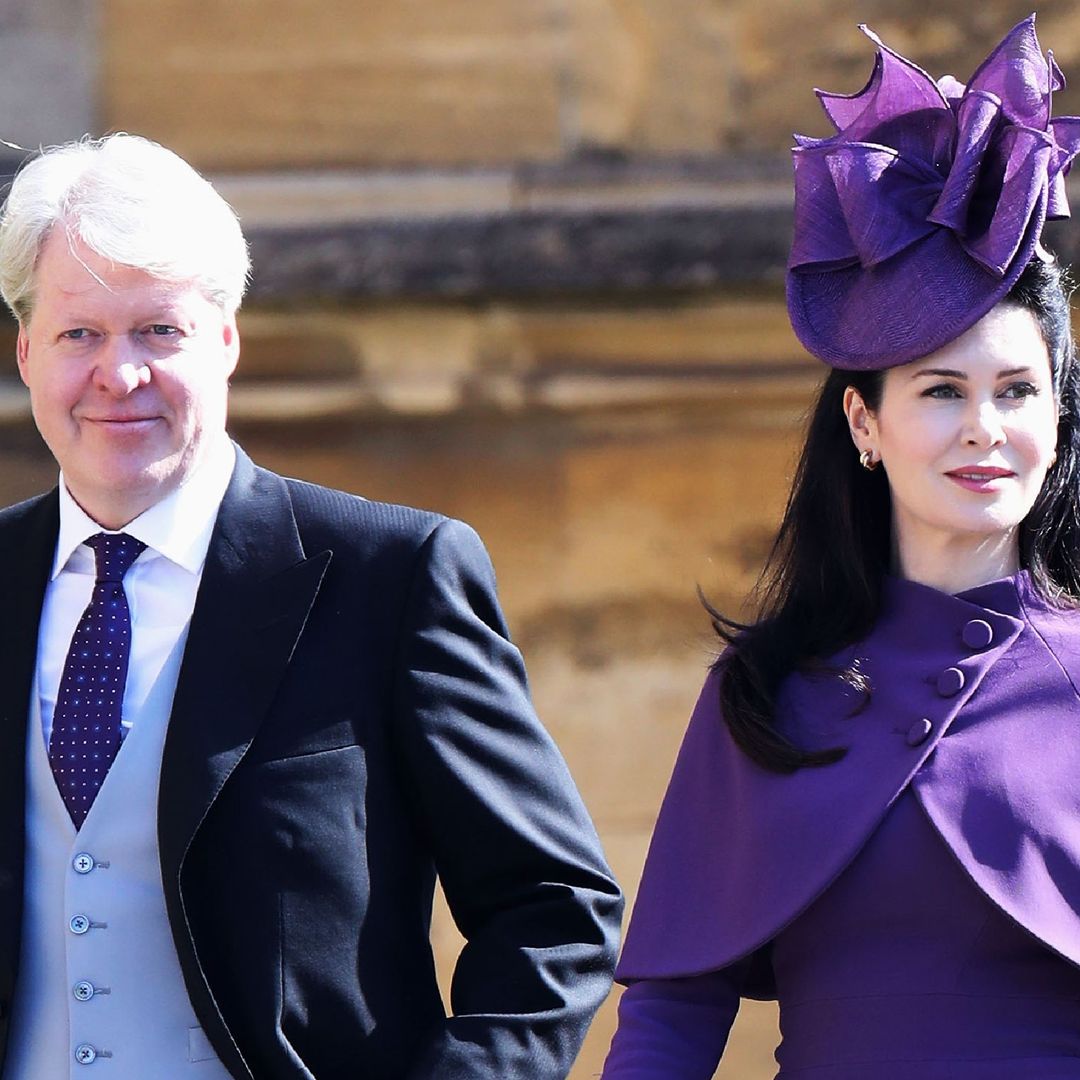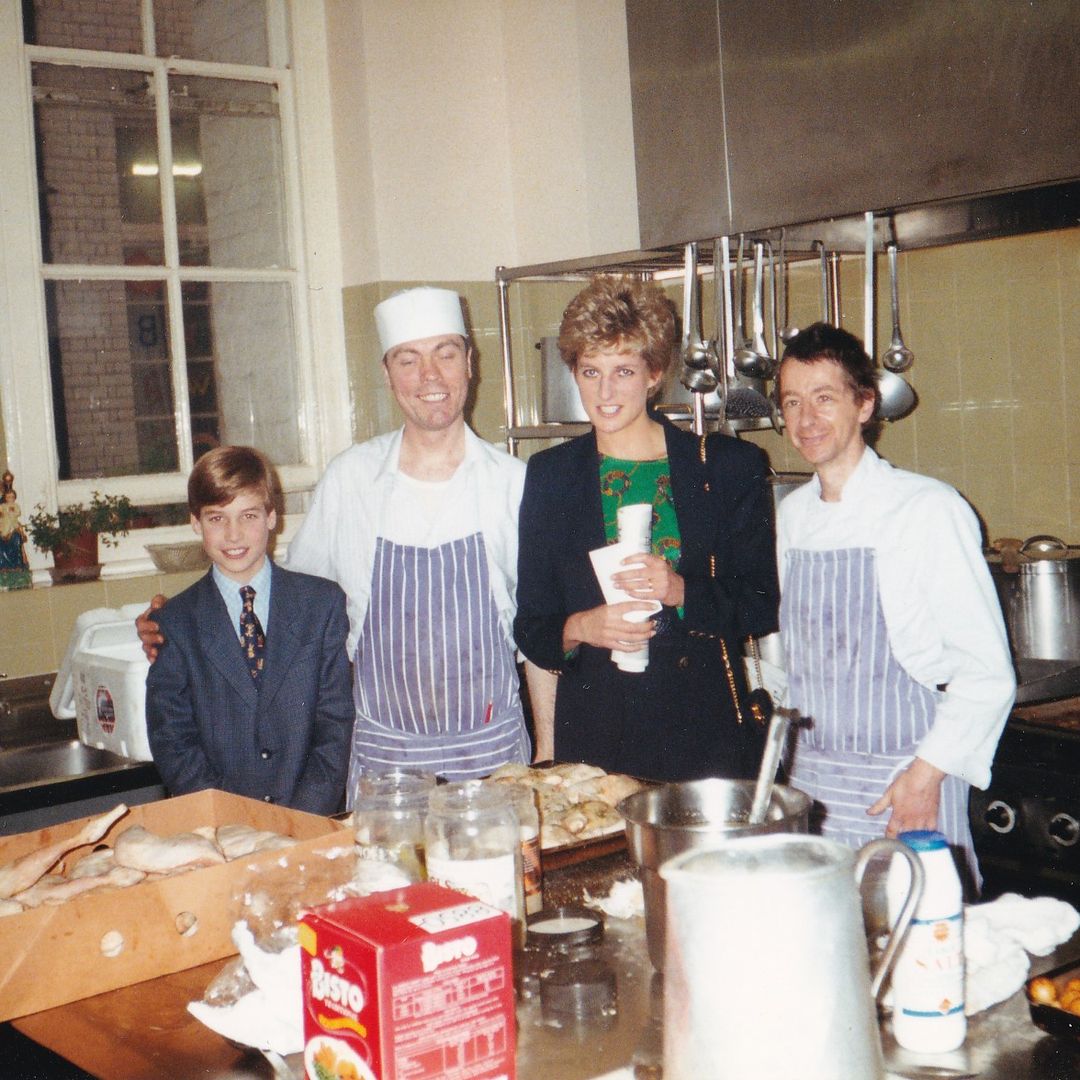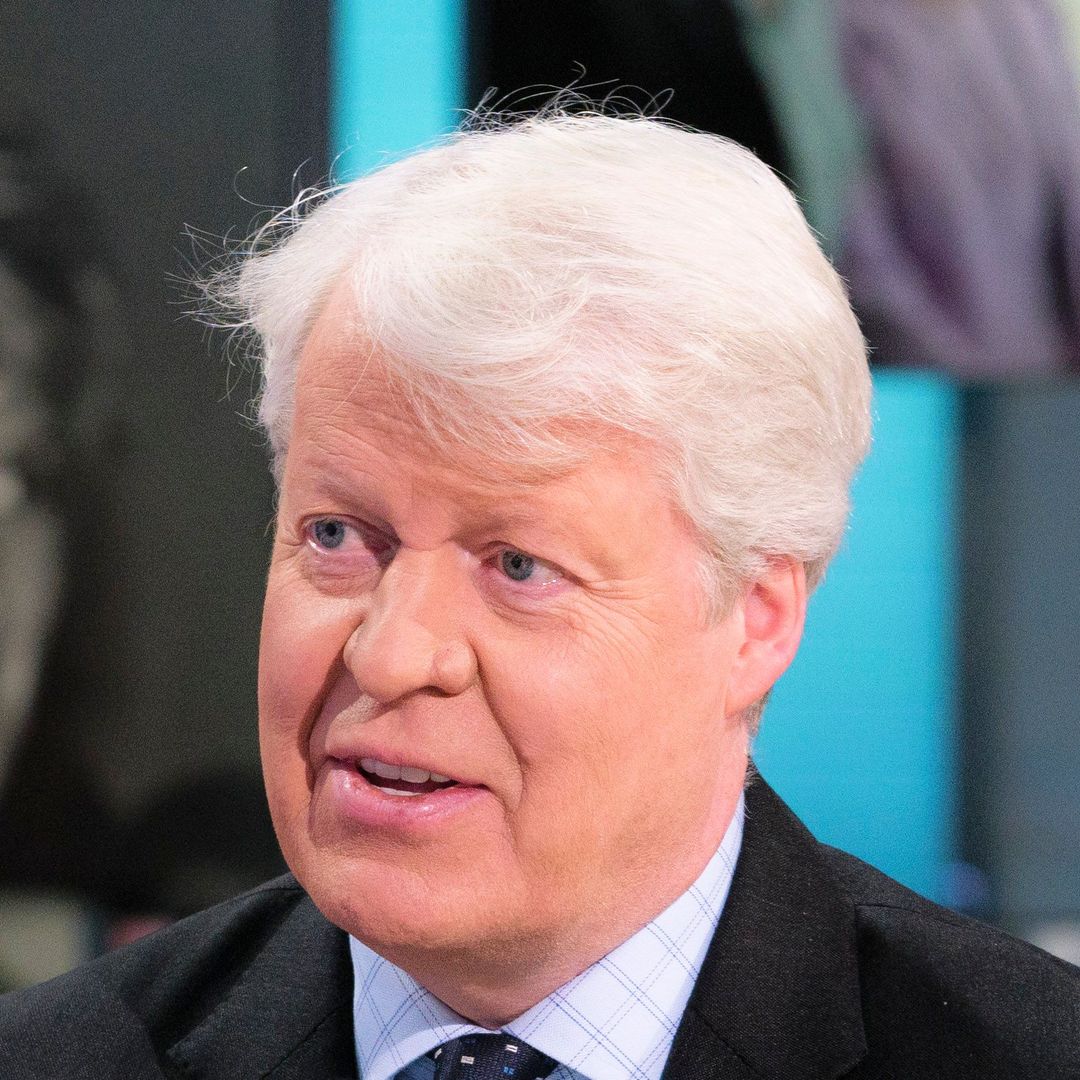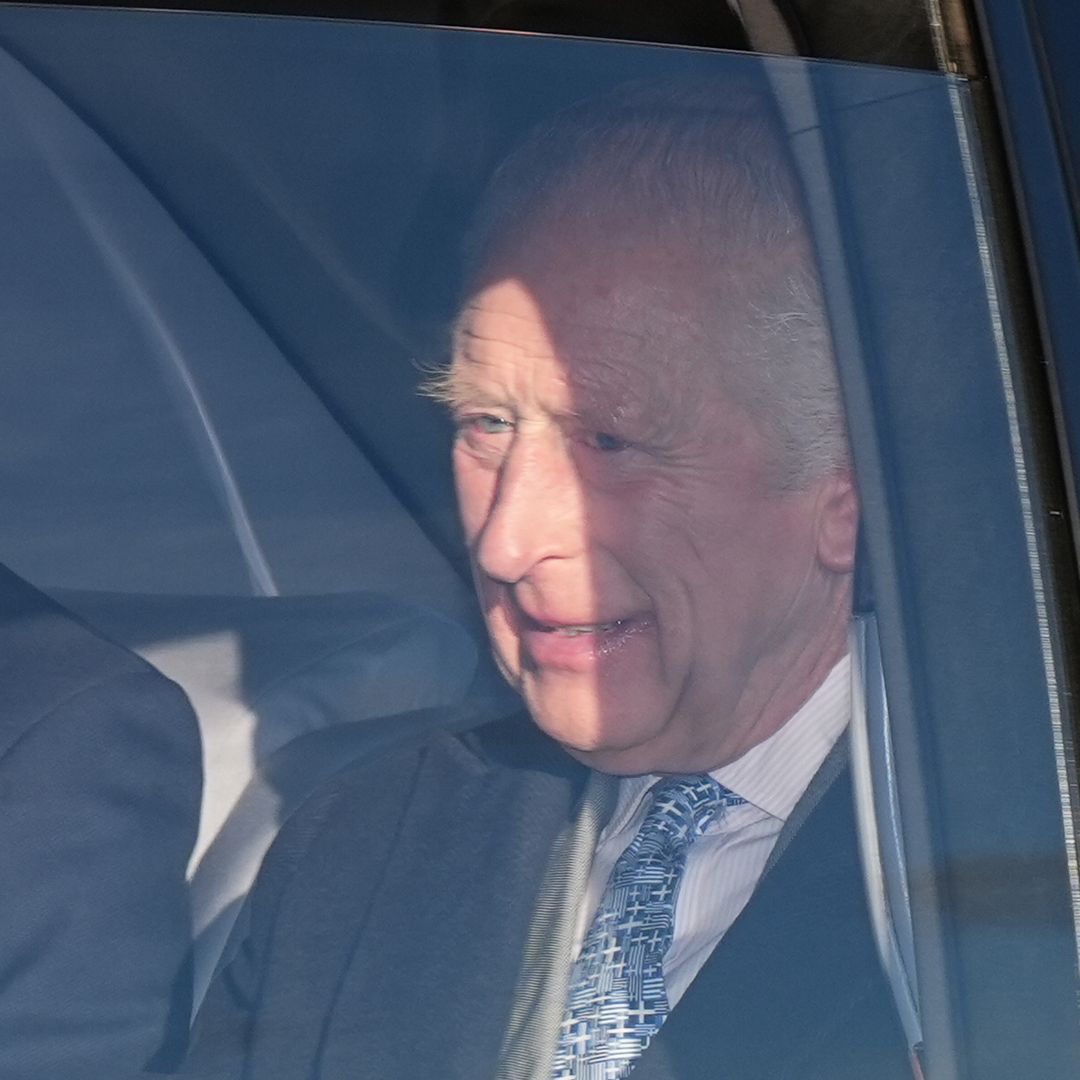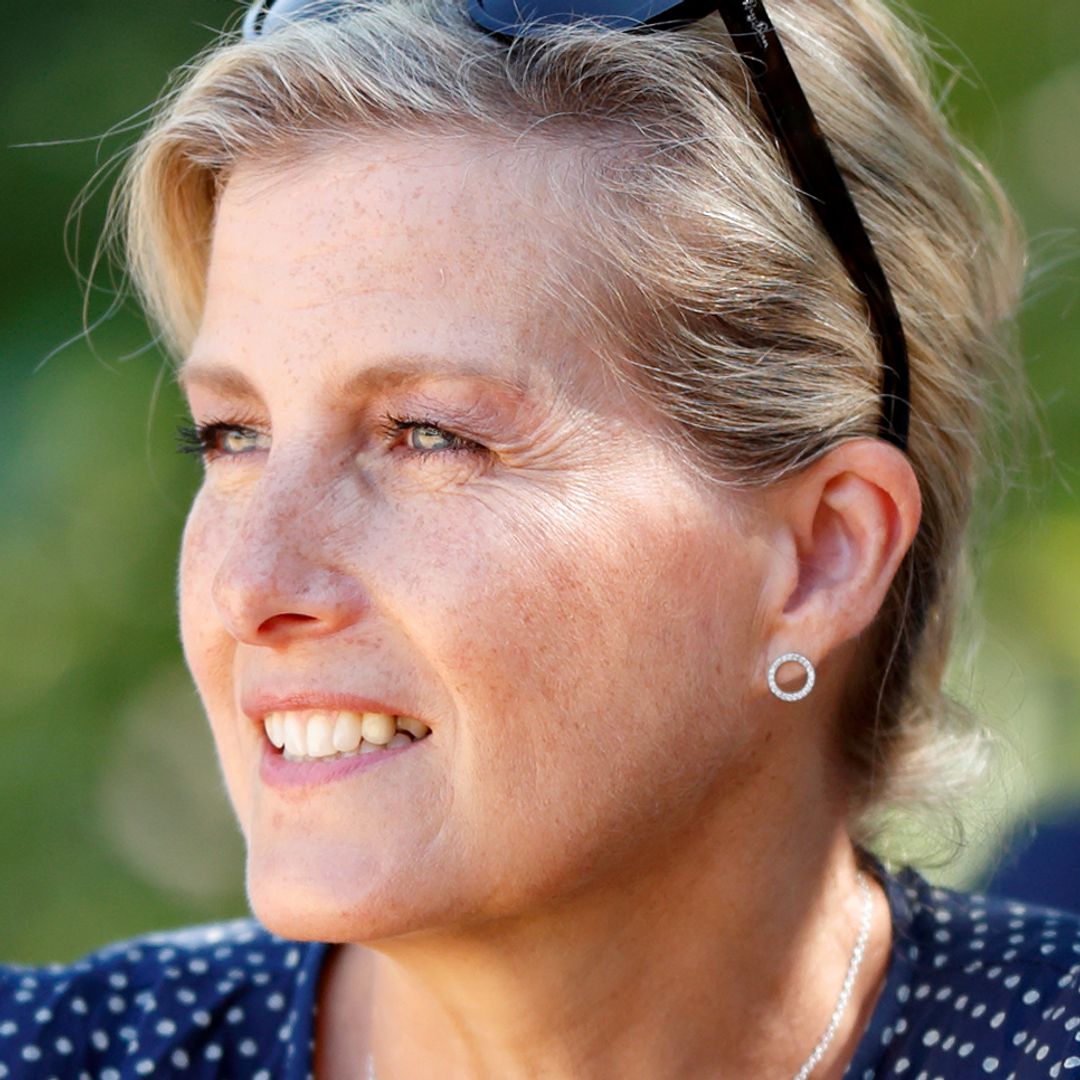The Duke of Sussex is making a two-day trip to the country as part of his tour of southern Africa, which began on Sept. 23 with stops in Cape Town, South Africa with Duchess Meghan and Archie Harrison and continued with Harry’s solo trip to Botswana on Sept. 26.
Diana’s landmark 1997 trip to Angola not only fundamentally changed the conversation around landmines, but it is not an exaggeration to say it also changed the world. Her trip and her advocacy there and afterward directly led to an international treaty to ban landmines that same year.
Although Angola remains one of the most mined countries in the world, the awareness Diana raised during that journey are credited with helping Angola in its recovery from its decades-long civil war and with spurring its eventual end in 2002 after it re-erupted the year following her visit.
Click through the gallery (or keep reading if you’re on mobile) for a trip through time back to 1997, what Diana did in Angola and why it matters.
Photo: © Tim Graham Photo Library via Getty Images
One-third of Angola’s population was displaced during the civil war, and 80 per cent of Angolans were without basic medical care by 2003, according to the New York Times. Nearly 10,000 children became soldiers during the war, and by 2003 nearly 30 per cent of Angolan children had life expectancies of less than five years of age, the New York Times also reported then.
When Diana visited in 1997, the country was - and still is - one of the most mined in the world. Just last year, more than 150 people were killed in explosions from landmines left over from the civil war, according to southern Africa’s Southern Times newspaper.
Diana was clear about her mission and why she was there right from the start. Upon arriving at the airport, she made a speech to reporters who had gathered.
Photo: © Tim Graham photo Library via Getty Images
While there were dozens of journalists there awaiting her arrival, few Angolans in the airport knew who she was, according to a Reuters report from the time. That stood in stark contrast to her status as a very public figure at home.
Photo: © Tim Graham Picture Library via Getty Images
Photo: © Tim Graham Picture Library via Getty Images
While there, Diana got a close look at some of the instruments of war that were causing death and destruction and violently altering so many people’s lives throughout the country, from grenades to mines and bombs.
Photo: © Pool/AFP/Getty Images
Photo: © Tim Graham Picture Library via Getty Images
At the time in Angola, this prompted shock since it was very unusual.
“She was probably the most recognizable person in the world, and so the fact that she went and met with landmine survivors was really quite incredible,” Paul Hannon, Executive Director of Mines Action Canada, told Time this year. “She showed basic humanity to people who don’t normally get that, and I think that was a wake-up call to all of us.”
Photo: © Tim Graham Picture Library via Getty Images
Photo: © Tim Graham Picture Library via Getty Images
Felisberto Cambonguele, the hospital’s prosthetics chief, told CNN he was surprised how down-to-earth Diana was.
“We started to think that the princess would be extremely well-dressed [and that] she would be wearing a crown,” he said, but then recalled everyone being struck by the love she showed them all.
Photo: © Tim Graham Picture Library via Getty Images
“She had contact with our patients, touched our children who were also receiving treatment... it was an unimaginable joy,” Felisberto continued to CNN.
Photo: © Tim Graham Picture Library via Getty Images
Photo: © Tim Graham Picture Library via Getty Images
Photo: © Tim Graham Picture Library via Getty Images
Photo: © Tim Graham Photo Library via Getty Images
Photo: © Tim Graham Photo Library via Getty Images
Photo: © Tim Graham Photo Library via Getty Images
“For the people that were here at that time, which was obviously still a time of conflict, it led to a feeling of acknowledgement, and that their plight was recognized around the world. The people I’ve spoken to who met Diana on that trip have all said how kind, considerate and how genuinely interested she seemed in them.”
Photo: © Tim Graham Photo Library via Getty Images
Photo: © Tim Graham Photo Library via Getty Images
Sadly, she died months later, after visiting Bosnia-Herzegovina and meeting with other victims of landmines. In December of that year, an international treaty to ban landmines passed, cementing her legacy. If only she had been alive to see it.
Diana would be so proud to see her son carrying on her incredible work.
Photo: © Tim Graham Photo Library via Getty Images


